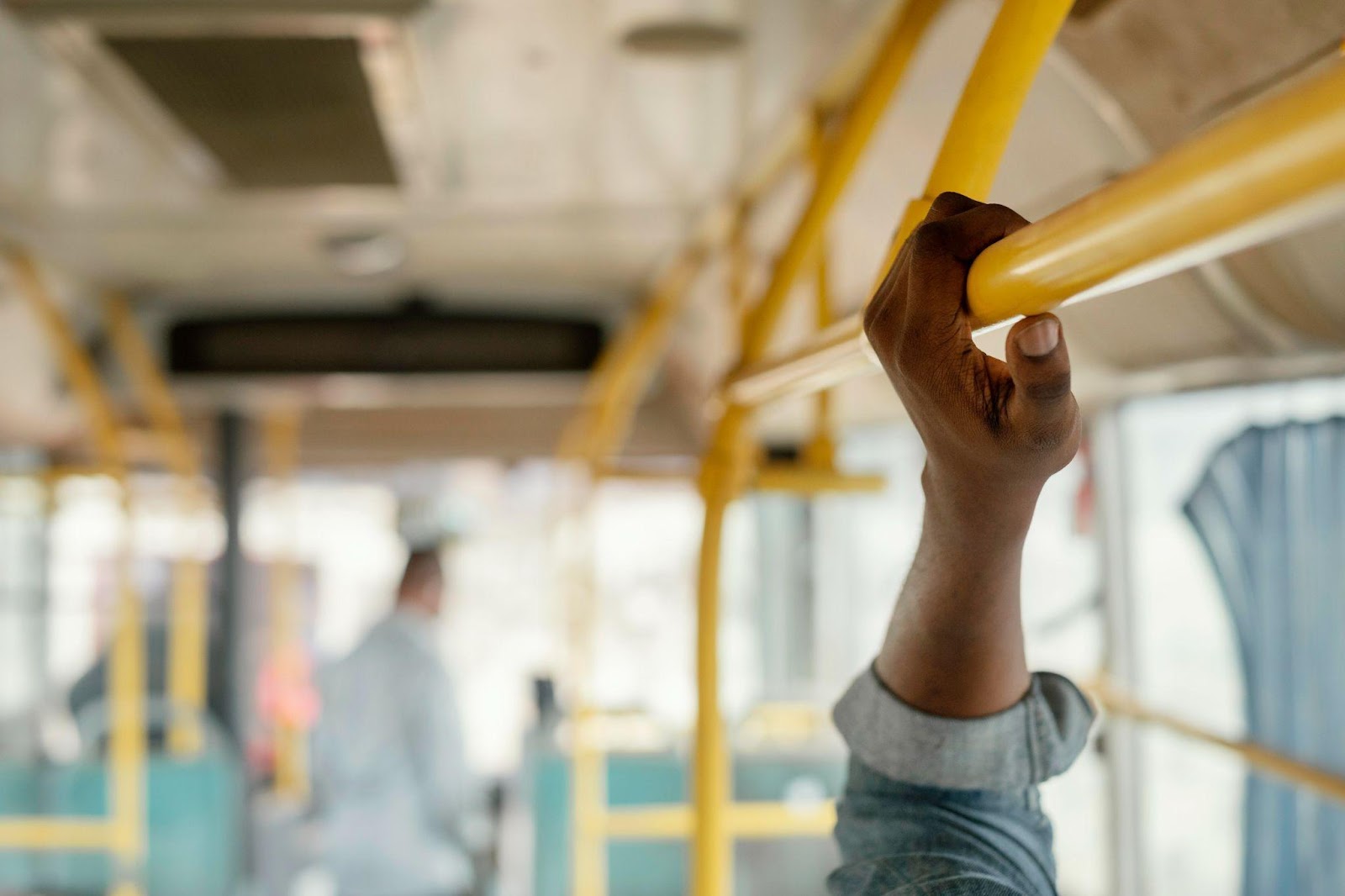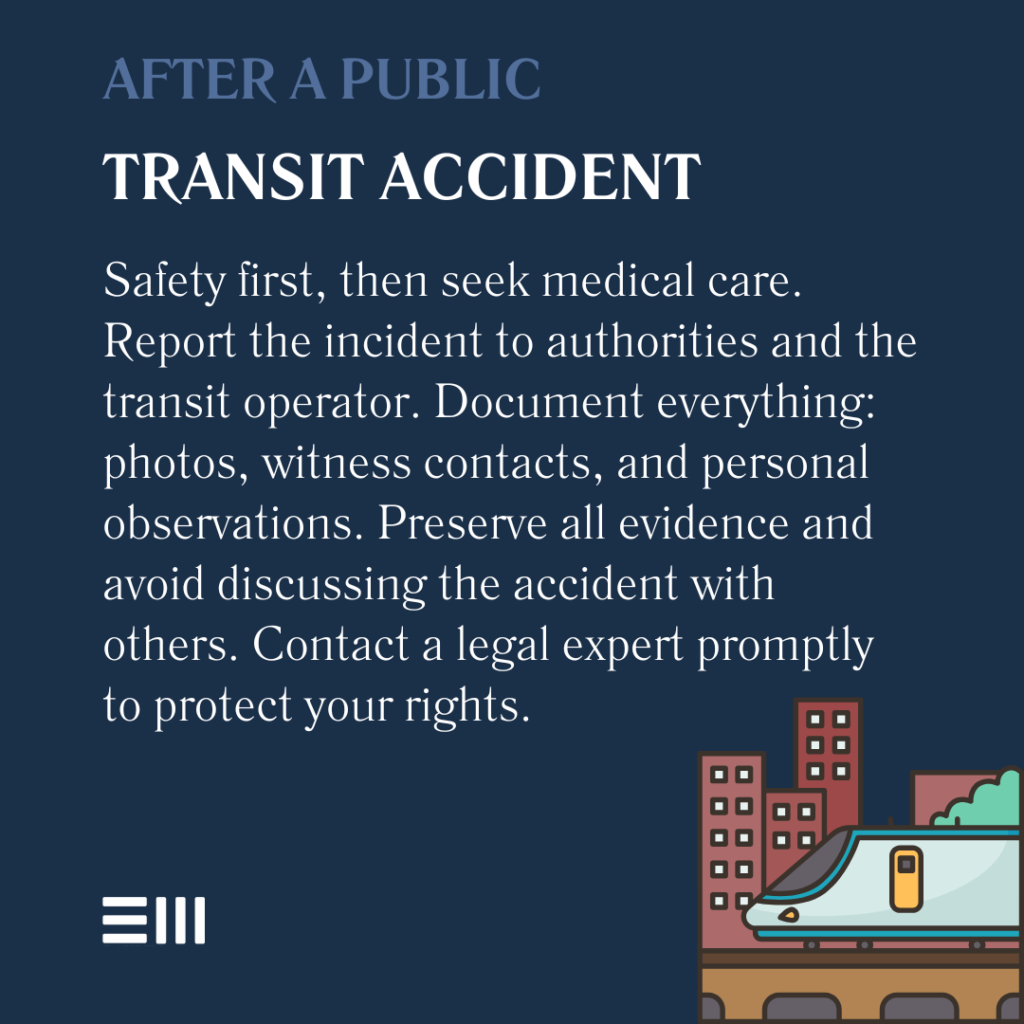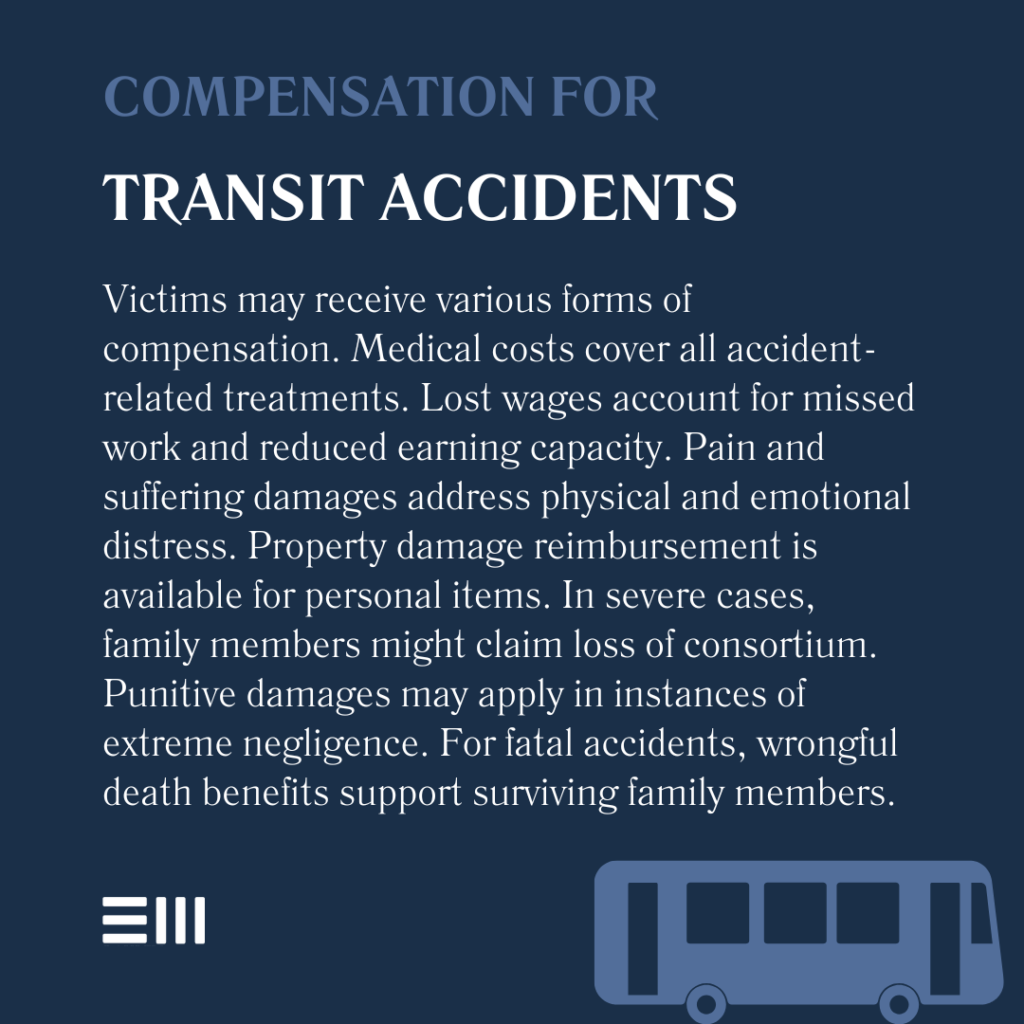
Every day, thousands of Alabamians rely on public transportation to navigate their busy lives. But what happens when the unexpected occurs?
Alabama traffic fatalities increased 6% from 2019 to 2022, a stark reminder of the risks we face on the road.
These incidents left many passengers grappling with injuries, financial burdens, and a maze of legal questions.
Understanding Public Transportation Accidents in Alabama
Public transportation accidents encompass a wide range of incidents involving various modes of transit. In Alabama, these may include:
- City buses;
- School buses;
- Trains and light rail systems;
- Paratransit vehicles;
- Airport shuttles; and
- Ride-sharing services (in some cases).
Understanding the nuances of these accidents is crucial for anyone seeking legal recourse or compensation.
Legal Framework for Public Transportation Accidents
Alabama’s legal landscape for public transportation accidents is multifaceted, incorporating both state and federal regulations.
Key elements include:
- Alabama Tort Claims Act: This legislation governs claims against state and local government entities, including many public transit operators.
- Federal Transit Administration (FTA) Regulations: These provide overarching safety standards and operational guidelines for public transportation systems receiving federal funding.
- Common Carrier Laws: Public transportation providers are often classified as common carriers, which imposes a higher duty of care towards passengers compared to ordinary drivers.
- Statute of Limitations: In Alabama, the time limit for filing a personal injury claim is generally two years from the date of the accident, but this can vary depending on the parties involved.
- Contributory Negligence: Alabama follows a contributory negligence rule, which can significantly impact compensation if the injured party is found to be even slightly at fault.
Understanding this legal framework is essential for navigating the complexities of public transportation accident cases and ensuring that victims’ rights are protected throughout the legal process.
Steps to Take After a Public Transportation Accident
If you’re involved in a public transportation accident in Alabama, taking the right steps immediately after the incident can significantly impact your ability to seek compensation.
Here’s a guide to help you navigate the critical moments following an accident:
- Prioritize Safety: Ensure you’re out of harm’s way and assist others if you’re able.
- Seek Medical Attention: Even if injuries seem minor, get checked by a medical professional. Some injuries may not be immediately apparent.
- Report the Incident: Notify the transit operator and local law enforcement. Obtain a copy of the accident report.
- Document Everything: Take photos of the accident scene, your injuries, and gather contact information from witnesses.
- Preserve Evidence: Keep all related documents, including medical records, receipts, and correspondence with insurance companies.
- Avoid Making Statements: Limit discussions about the accident, especially with insurance representatives, until you’ve consulted with a legal professional.
- Contact a Legal Expert: Consult with an attorney experienced in public transportation accidents to understand your rights and options.
By following these steps, you create a solid foundation for any potential legal action or compensation claim.
Remember, the actions you take in the immediate aftermath of an accident can have long-lasting implications for your case.

Types of Compensation Available
Victims of public transportation accidents in Alabama may be eligible for various forms of compensation, depending on the specifics of their case.
- Medical Expenses: This covers all accident-related medical costs, including emergency treatment, hospital stays, surgeries, medications, and ongoing therapy.
- Lost Wages: If your injuries prevent you from working, you may be entitled to compensation for lost income, including future earning capacity.
- Pain and Suffering: Non-economic damages that account for physical pain and emotional distress resulting from the accident.
- Property Damage: Compensation for personal property damaged or lost in the accident.
- Loss of Consortium: In severe cases, family members may claim compensation for the loss of companionship or support.
- Punitive Damages: In cases of gross negligence, these damages may be awarded to punish the responsible party and deter similar conduct.
- Wrongful Death Benefits: If the accident results in a fatality, surviving family members may be entitled to compensation for funeral expenses, lost support, and other damages.
The amount and types of compensation available can vary significantly based on factors such as the severity of injuries, impact on quality of life, and the degree of negligence involved.

Challenges in Public Transportation Accident Cases
Pursuing a legal claim for a public transportation accident in Alabama can present unique challenges.
Being aware of these potential obstacles can help you better prepare for the legal process:
- Government Immunity: Many public transit operators are protected by governmental immunity, which can limit liability and complicate the claims process.
- Multiple Parties: Accidents often involve various entities, including transit authorities, maintenance companies, and other motorists, making it complex to determine liability.
- Strict Deadlines: The statute of limitations for filing claims against government entities is often shorter than for private parties, requiring swift action.
- Limited Insurance Coverage: Public entities may have caps on insurance coverage, potentially affecting the compensation available to victims.
- Complex Regulations: Navigating the web of federal, state, and local regulations governing public transportation can be daunting.
- Evidence Gathering: Obtaining crucial evidence, such as surveillance footage or maintenance records, may require legal intervention.
- Contributory Negligence: Alabama’s strict contributory negligence rule can bar recovery if the victim is found even slightly at fault.
- Public Scrutiny: High-profile cases may attract media attention, adding an extra layer of complexity to the legal proceedings.
Overcoming these challenges often requires the expertise of legal professionals well-versed in public transportation accident cases.
Frequently Asked Questions About Public Transportation Accidents in Alabama
Navigating the complexities of public transportation accidents often raises numerous questions.
Here, we address some of the most common inquiries we receive about public transportation accidents in Alabama to provide clarity and guidance for those affected by such incidents.
What Should I Do Immediately After a Public Transportation Accident?
First, ensure your safety and seek medical attention, even if injuries seem minor. Report the incident to the authorities and the transit operator.
Collect contact information from witnesses and document the scene if possible. Avoid discussing fault or making statements to insurance representatives before consulting a lawyer.
How Long Do I Have to File a Claim After a Public Transportation Accident in Alabama?
The statute of limitations for personal injury claims in Alabama is generally two years from the date of the accident.
However, claims against government entities may have shorter deadlines, sometimes as little as six months. It’s crucial to consult with an attorney promptly to ensure you don’t miss critical filing deadlines.
Can I Sue the Government for a Public Transportation Accident?
Yes, but the process is more complex than suing a private entity. Claims against government agencies are subject to special rules under the Alabama Tort Claims Act.
These cases often have stricter notice requirements and liability limits. An experienced attorney can help navigate these unique challenges.
What if I Was Partially at Fault for the Accident?
Alabama follows a strict contributory negligence rule. If you’re found to be even 1% at fault for the accident, you may be barred from recovering compensation.
This makes it crucial to have skilled legal representation to protect your interests and counter any allegations of fault.
How Is Compensation Determined in Public Transportation Accident Cases?
Compensation is based on various factors, including the severity of injuries, medical expenses, lost wages, pain and suffering, and long-term impact on quality of life.
In cases involving government entities, there may be caps on the amount of compensation available. An attorney can help assess the full value of your claim.
What if the Accident Involved a School Bus?
School bus accidents involve additional considerations, including potential claims against school districts or private contractors.
These cases may be subject to different regulations and liability standards. Specialized legal expertise is often necessary to navigate the complexities of school transportation accidents.
Can I Still Receive Compensation if I Wasn’t Wearing a Seatbelt?
While not wearing a seatbelt doesn’t automatically disqualify you from seeking compensation, it can complicate your case.
Alabama’s contributory negligence rule may come into play, potentially affecting your ability to recover damages. An attorney can help address this issue and develop strategies to protect your claim.
What Evidence Is Crucial in Public Transportation Accident Cases?
Key evidence may include accident reports, surveillance footage, witness statements, medical records, and expert testimonies.
Maintenance records of the vehicle involved and the driver’s history can also be crucial. Preserving and obtaining this evidence promptly is often critical to building a strong case.
Your Path to Justice and Compensation
Have you or a loved one been affected by a public transportation accident in Alabama? Don’t navigate this challenging journey alone.
At Baxley Maniscalco, we understand the intricacies of public transportation accident cases and are committed to fighting for your rights.
Our experienced team of attorneys specializes in handling complex public transportation accident claims.
We have a proven track record of successfully representing clients against government entities, large corporations, and insurance companies. Let us put our expertise to work for you.
Take the first step towards justice and fair compensation today. Contact Baxley Maniscalco for a free, no-obligation consultation.
Can't find what you're looking for? Search our site below.










